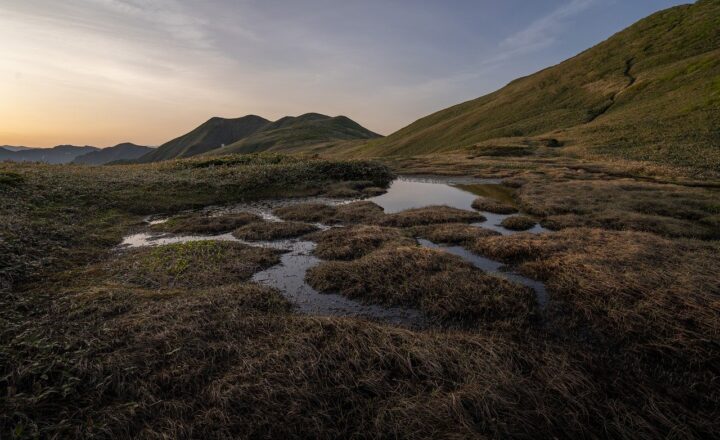The Herbivores of the Dinosaur Age: Understanding Their Diets and Defenses
November 14, 2024

Dinosaur herbivores were a fascinating group of creatures that roamed the Earth during the Mesozoic Era, boasting a wide variety of species that adapted to their environments in remarkable ways. Understanding their diets and defenses not only sheds light on the lifestyle of these prehistoric giants but also reveals the intricate ecosystems in which they lived. In this article, we will delve into the unique adaptations and the abundant flora available to herbivorous dinosaurs, exploring how their diets shaped their evolution and survival strategies.
1. A Diverse Array of Herbivores
The herbivorous dinosaurs ranged from the small, agile hypsilophodon to the colossal sauropods like Brachiosaurus and Apatosaurus. Each of these species developed specialized anatomical features that facilitated their dietary needs:
- Jaw Structure: Herbivores typically had flat, grinding teeth designed for processing tough plant material, as opposed to the sharp, serrated teeth seen in carnivorous dinosaurs, which were suited for tearing flesh.
- Neck Length: Many large herbivores, such as the long-necked sauropods, had exceptionally long necks that allowed them to reach high vegetation, giving them access to food sources unavailable to shorter creatures.
- Body Size: The sheer size of many herbivores acted as a defense mechanism against predators, with giants like Triceratops sporting massive horns and frills to ward off attackers.
These adaptations were crucial for survival in a world dominated by predators, showcasing the balance of nature’s design in the Mesozoic era.
2. Plant Diets and Feeding Strategies
Herbivorous dinosaurs fed on a wide range of plant matter, including:
2.1 Types of Plants:
The Mesozoic climate supported diverse vegetation, from cycads and ginkgos to conifers and flowering plants. The primary sources of their diet included:
- Foliage: Leaves were a staple for many herbivores, especially in lush forest environments, where species like the Stegosaurus fed on abundant ferns and shrubs.
- Low-growing Vegetation: Smaller herbivores, such as the ornithopods, thrived on grass and ferns close to the ground, skillfully navigating underbrush to find food.
- High Vegetation: Giant dinosaurs like Diplodocus exploited their long necks to reach high, leafy branches, consuming vegetation that others could not.
2.2 Feeding Mechanics:
Adaptations in feeding mechanics were crucial:
- Grazing: Some species were adept at sustained grazing, while others were browsers that selectively picked leaves and fruits.
- Digestive Systems: Many had complex digestive systems that evolved to break down cellulose efficiently, similar to modern-day herbivores that use fermentation to process plant materials.
This variety in dietary habits contributed to the richness of their ecosystems, promoting a diverse flora that helped sustain their abundant numbers.
3. Defenses Against Predators
As prey creatures, herbivorous dinosaurs faced constant threats from predatory dinosaurs. They evolved several defenses to fend off these attackers:
3.1 Physical Defenses:
These adaptations included:
- Armor: Species like Ankylosaurus were equipped with tough, bony plates and spikes that provided significant protection against predators.
- Horns and Crests: Herbivores like Triceratops possessed large horns used for defense and in mating displays, deterring predators like Tyrannosaurus rex.
- Coloration and Camouflage: Blending into their environment would have helped smaller herbivores hide from larger predators, making stealth a key element in their survival strategy.
3.2 Social Behavior:
Many herbivorous dinosaurs adopted social behaviors, such as:
- Herding: Large groups, or herds, provided protection through numbers, making it more challenging for predators to single out individuals.
- Fleeing: Speed was often a critical factor in evading predators, with many smaller herbivores capable of rapid movement to escape immediate danger.
These defensive adaptations highlight the dynamic predator-prey relationships that shaped the lives of these ancient creatures.
4. The Role of Herbivores in Dinosaur Ecosystems
Herbivorous dinosaurs played a crucial role in their ecosystems, influencing the growth and evolution of flora:
4.1 Seed Dispersal:
Through their feeding habits, herbivores affected plant life cycles and reproduction by:
- Consuming Fruits and Seeds: Many herbivores promoted the spread of plant species by ingesting seeds and disturbing the soil, aiding in new growth.
- Grazing Habits: By grazing on low vegetation, they encouraged the growth of different plant species that were adapted to their feeding patterns.
4.2 Nutritional Benefits:
Their existence contributed to:
- Nutrient Cycling: The decomposition of herbivore waste provided essential nutrients for the soil, thus promoting healthy vegetation.
- Ecosystem Stability: Each herbivore species contributed to the ecological balance, affecting food availability and population dynamics among both flora and fauna.
The interdependence between herbivores and their environment highlights the intricate web of life in prehistoric times.
Conclusion
Herbivorous dinosaurs were not just passive participants in their ecosystems; they were essential agents of change, influencing plant life, shaping their environments, and adapting remarkable strategies for survival. Studying these ancient creatures allows us to understand not only their unique adaptations and lifestyles but also the dynamics of Earth’s distant past. The legacy of these magnificent herbivores is present in the ecosystems we see today, where similar patterns of behavior and adaptation continue to thrive.
Through examining the complexities of herbivore diets and defenses, we gain valuable insights into evolutionary processes and how organisms interact with their environments in response to challenges and opportunities alike. As we continue our journey into paleontology, the varied lives of herbivorous dinosaurs remain a captivating and vital aspect of our natural history.







